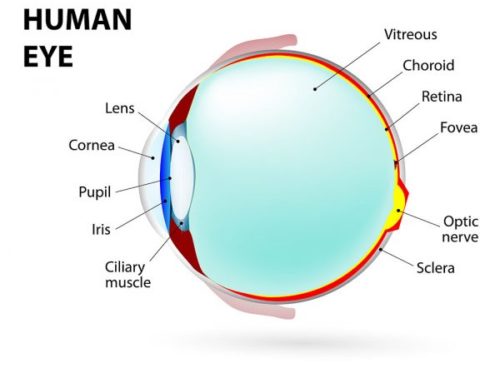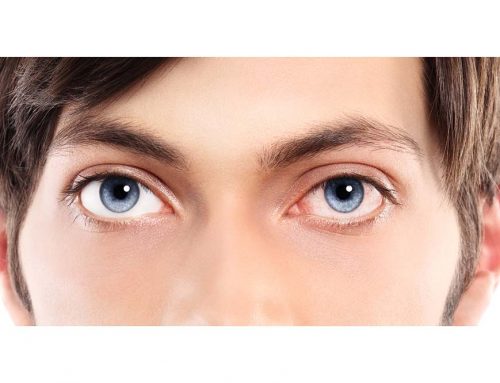
Blocked tear ducts are a common eye condition that causes tear duct obstruction. When left untreated, blocked ducts can lead to a wide array of problems.
This issue is more often found in babies than in adults. In fact, 1 out of 20 babies is born with a tear duct obstruction.
Signs and symptoms
Fortunately, the signs and symptoms of blocked tear ducts are fairly noticeable. The main symptoms relating around dryness of eyes and inflammation. A more comprehensive list of symptoms includes, but may not be limited to:
- Excessive tearing
- Crusting of eyelids
- Increasingly blurred vision
- Chronic pink eye
Additional Risk Factors
There are additional risk factors you ought to be aware of when dealing with blocked tear ducts.
Dirty contact lenses–Contact lenses are excellent at restoring vision. But if they are poorly maintained, they can become a breeding ground for bacteria.
Contact sports–Sports that involve heavy body contact can cause tears in some regions of the eye. Rips or tears in the eye can contribute to tear duct blockages.
How are tears produced?
The lacrimal glands are responsible for the flow of tears. These glands are located on the top of our eyeballs. Blinking causes the inner eyelids to spread these tears across our entire eye, thus providing moisture. Finally, the tears are dripped into the puncta (the corners of our eyes) and reabsorbed into our system by the time they reach the nose.
What causes a blocked tear duct?
Firstly, it is essential to distinguish the causes of this condition by age group. In the case of babies, the tear ducts may not fully be developed at the time of birth.
However, in the case of adults, tear duct blockages can be caused by infections, tears, tumors or even other eye-disease medications. In adults, the infection can also be spread via the nasal passages. Also, any form of trauma to the nose or facial area can cause injury sufficient enough to obstruct the tear ducts.
Treatment
There are some ways to treat blocked tear ducts. Treatment options range from simple to complex depending on the progression of the disease.
It is important to see any eye specialist if you or your child are having issues with your tear ducts. The doctor will advise on the appropriate course of action. Some of the treatment options which may be recommended include:
Massages
By massaging the lacrimal sac, it is possible to alleviate the pressure in the eyes. It is recommended to massage thoroughly, twice in the morning and twice at night. If done correctly, a clear fluid will start to drain from the corner of your eyes providing temporary relief.
Antibiotics
While antibiotics won’t clear up the blockage, they will serve to minimize bacterial infections. Therefore, antibiotics are useful when paired with another treatment method.
Blocked tear ducts in babies and young children
As mentioned earlier, babies and young children are more susceptible to having blocked tear ducts. This is partly because immediately after birth the ducts may be covered by a thin film.
There is also the notion that some babies are born with undeveloped tear ducts. With either of these being the case, the condition is often resolved on its own within the child’s first year.
Intubation
During this procedure, the doctor inserts two small tubes in your tear duct openings. These tubes then lead to the inside of the nose where they are left for two to three months. Within that time frame, the tubes slowly open up the ducts allowing the blocked tear ducts to be flushed out.
Tear duct probing
If the issue hasn’t resolved itself by the time a child has reached one year of age the doctor will conduct a tear duct probing. While the child is sleeping the doctor probes into the puncta and opens up any blocked tissues present. The procedure has a very high success rate and is virtually painless.
Surgical options
Surgery is also a treatment option for blocked tear ducts. However, it is only performed in the event of a severe injury or when all other treatment plans have failed.
Additionally, surgery is rarely recommended for children with blocked tear ducts. The specific name for the operation is dacryocystorhinostomy–or DCR for short. With this surgery, an entirely new passage is created for the tears to drain.
This surgery has two specific methods regarding how it is to be performed. These are external and endoscopic.
- External – The surgeon makes two small incisions on the side of your nose. Once the incisions are made the surgeon connects the lacrimal glands to them via a tube. The patient is then stitched up and sent on their way.
- Endoscopic – The surgeon will insert a camera device along with tiny medical instruments into your nostrils.
Balloon catheter dilation
A step up from tear duct probing is catheter dilation. This method is only attempted when probing has failed. The doctor inserts a thin tube known as a catheter into the tear ducts. At the end of the catheter is a sort of balloon bag. The doctor then begins to inflate and deflate the balloon bag causing the eventual opening of the tear duct’s passage.
Post surgery
As with any surgery, there are specific steps to follow to prevent further complications regarding blocked tear ducts. Nose and eye drops are highly recommended to prevent inflammation and irritation. And since the formation of a new tear channel occurs in months rather than days, every 3-6 months patients are advised to visit their doctor to have the tube removed.
See your eye specialist
Although blocked tear ducts are relatively common in both babies and adults, they are not usually a cause for major concern. More often than not, any issues with tear ducts can be fixed via non-surgical means.
The information here is intended as a guide. If you believe that you or your child as an issue in the eyes, you need to seek the advice of a specialist. Left untreated, the condition may be exacerbated and can cause complications.
Here at the New Jersey Eye Center we have experience diagnosing and treating blocked tear ducts. Please get in touch with us to make an appointment or just walk in.



